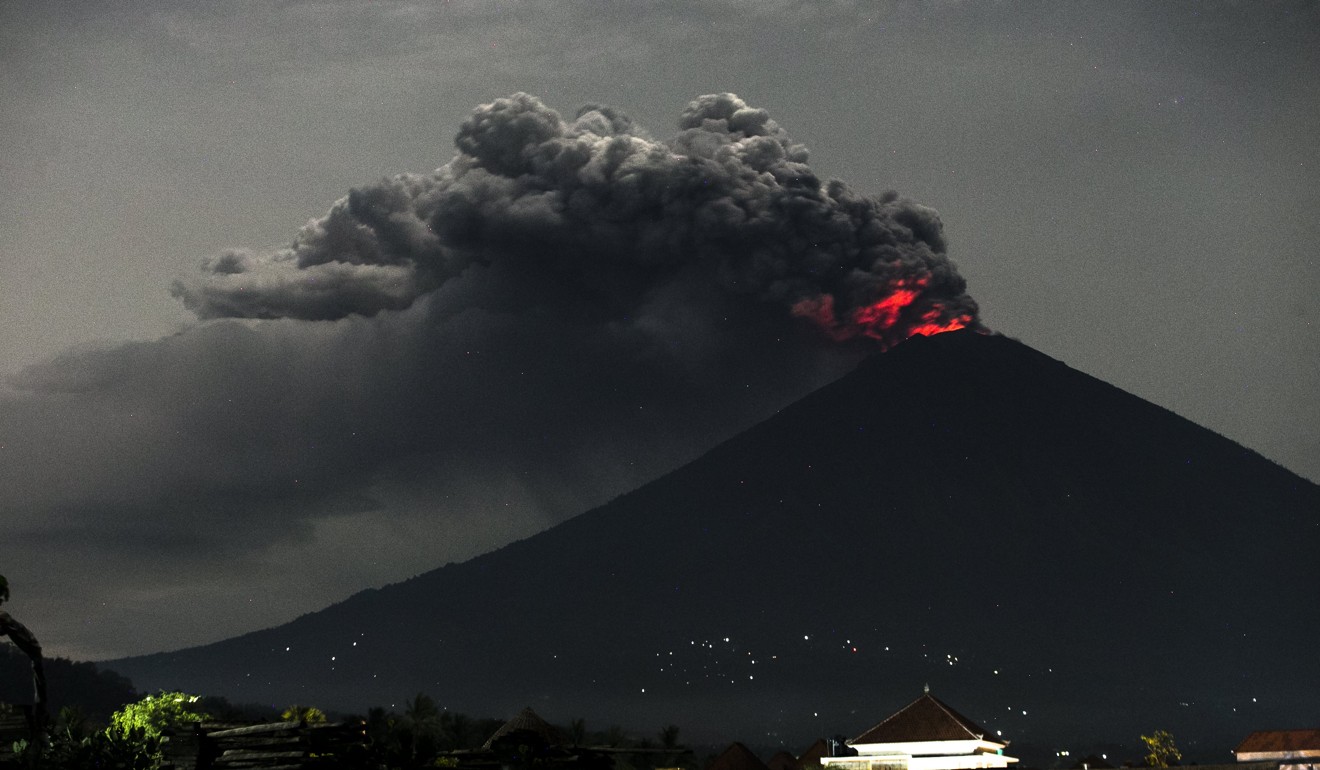
Indonesia reopens Bali airport as volcano ash shifts direction
Most of Bali’s tourists are Chinese, followed by Australians, Indians, British and Japanese
Bali’s international airport reopened on Wednesday afternoon after a nearly three-day closure, after towering columns of volcanic ash and smoke changed direction on the Indonesian resort island.
The move raised hope for some of the more than 120,000 tourists stranded after a surge in activity at Mount Agung grounded hundreds of flights since Monday.
It was not immediately clear when flights would resume. Airport officials cautioned that the airport could close again if winds change direction once more, endangering flights.
Ash is dangerous for planes as it makes runways slippery and can be sucked into their engines.
“We are going to constantly monitor the situation on the ground,” said Ngurah Rai airport spokesman Arie Ahsanurrohim.
Australian visitor Ebra Syllivan was overjoyed at the news.
“I didn’t know it was going to reopen today – we just came here because our flight was tonight and we’ve booked out of our motel,” she said at the airport. “It’s fabulous because we need to get back. We’ve got to get back to work.”
Mount Agung could produce a major eruption at any moment, officials have warned.
Tens of thousands have already fled their homes around the volcano – which last erupted in 1963, killing about 1,600 people – but as many as 100,000 are likely to be forced to leave if there is a full eruption, disaster agency officials have said.
Experts said Agung’s recent activity matches the build-up to the earlier disaster, which ejected enough debris – about a billion tonnes – to lower global average temperatures by around 0.3 degrees Celsius for roughly a year.
“Small eruptions have been happening continuously but there’s still the possibility of a bigger, explosive eruption,” said I Gede Suantika, a senior vulcanologist at Indonesia’s volcanology agency.
“Activity remains high and we are still on the highest alert level.”

Roadside signs saying “Volcanic danger zone. No entry!” underscored the potential risks of staying behind.
There is a 10km exclusion zone around Agung, which is 75km away from the beachside tourist hub of Kuta.
As of Wednesday around 440 flights had been cancelled since the start of the week.
The airport on nearby Lombok island – also a popular tourist destination – has opened and closed several times in the past few days. It was also open on Wednesday.
Some 100 buses are taking visitors to several destinations including Surabaya on Java island – 13 hours’ drive and a ferry ride away – and Jakarta, as torrential rain lashed the island.
“We decided to take the bus because in this island we are very nervous and we want to stay in another island, we want to be in Java,” said Sofia Maria, a 24-year-old Russian tourist on her way to Jakarta.
Most of Bali’s tourists are Chinese, followed by Australians, Indians, Britons and Japanese, according to the immigration office, which added that nearly 25,000 foreigners live on the small island.

Foreigners whose visitor visas are expiring will be given a special permit to stay longer due to the eruption, the agency said
Agung rumbled back to life in September, forcing the evacuation of 140,000 people living nearby. Its activity decreased in late October and many returned to their homes.
However, on Saturday the mountain sent smoke into the air for the second time in a week in what vulcanologists call a phreatic eruption – caused by the heating and expansion of groundwater.
So-called cold lava flows have also appeared – similar to mud flows and often a prelude to blazing orange lava.
Indonesia, the world’s most active volcanic region, lies on the Pacific “Ring of Fire” where tectonic plates collide, causing frequent volcanic and seismic activity.
Last year seven people were killed after Mount Sinabung on the western island of Sumatra erupted. A 2014 eruption at Sinabung killed 16.

.png?itok=arIb17P0)